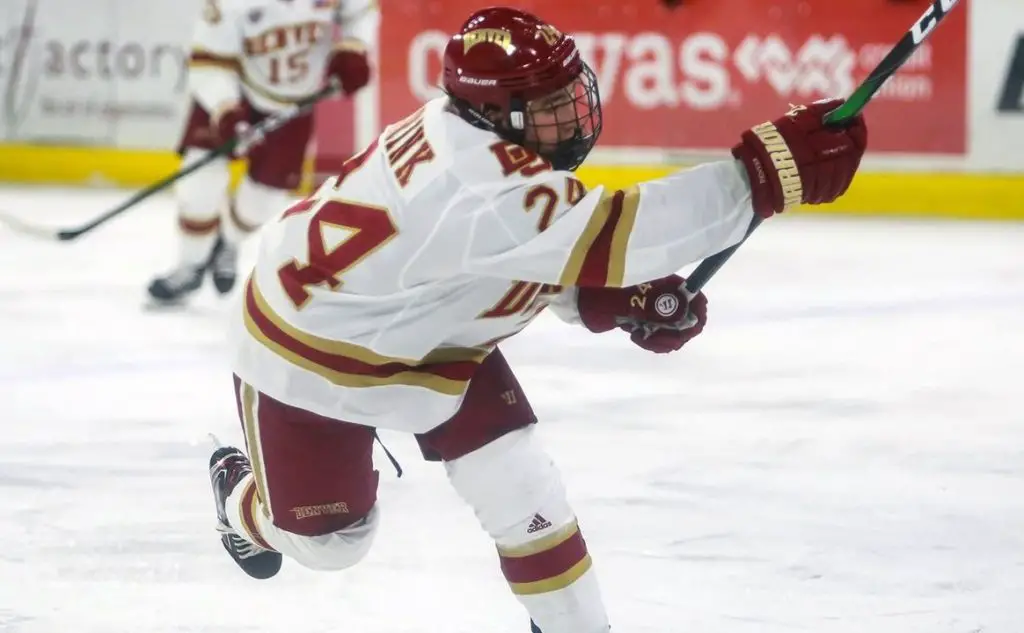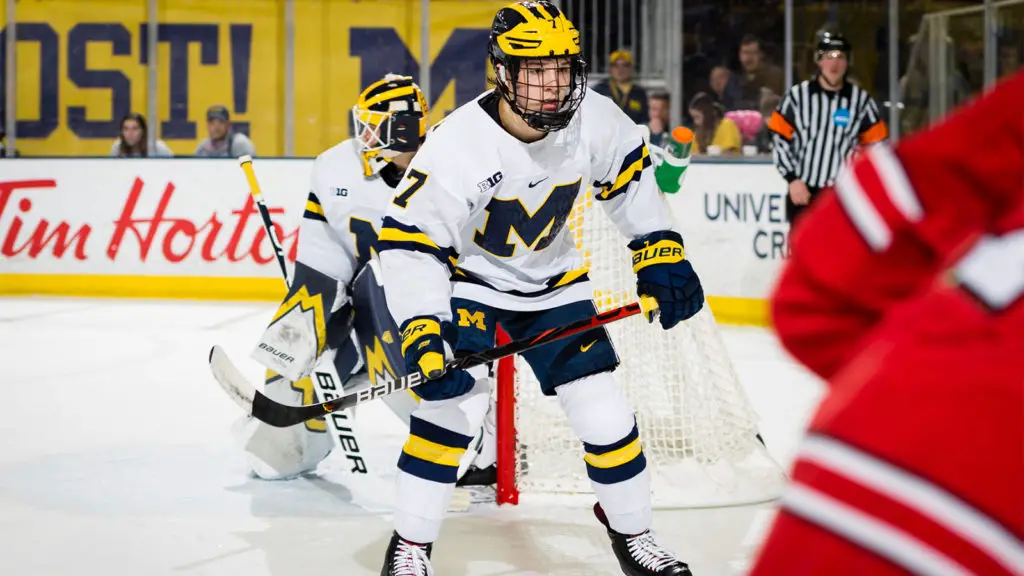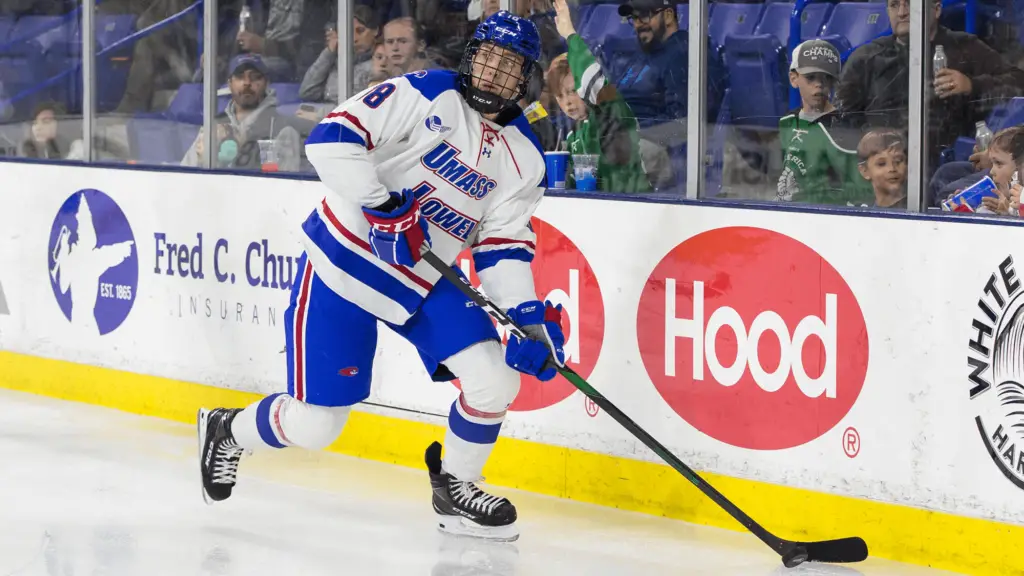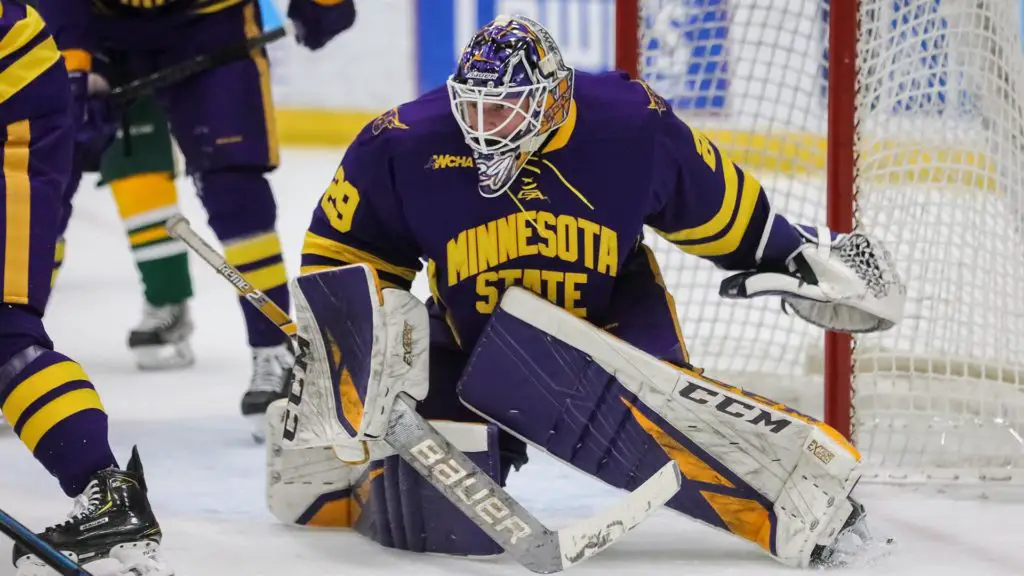
One conference plans to begin its season in a bubble.
Two others will be adding teams as part of a scheduling alliance.
And another is at the mercy of half of its members and their all-sports conference on when play can begin.
Such is the stranger-than-fiction scenarios that Division I men’s college hockey teams and their six respective conferences face as they hope to begin competition, playing games for the first time since March 7 and doing so amid plenty of uncertainty created by COVID-19.
College hockey is unique compared to other NCAA sports. Though considered a “winter sport” for classification, college hockey is the only sports that spans across three different seasons, typically beginning in October and wrapping up at the Frozen Four in early April.
This season, though, is already facing setbacks and current reports indicate that the earliest any games will be played will be November 13. Intra-conference play will be extremely limited, and conferences are doing absolutely everything they can to limit travel.
Some conferences face far different conditions than others. Hockey East, for example, is so regional in its membership that most teams can play one another by hopping on a bus three-to-four hours prior to faceoff time.
Other conferences face a very different situation. The NCHC is so geographically spread out that the conference plans to bring all eight of its members to Omaha for the month of December a simulate something similar to what the NHL and NBA successfully executed over the summer months, playing in a bubble (the NCHC is using the term “pod”).
Life in a bubble … err, “pod”
The NCHC’s approach is to split the eight teams into two groups – one featuring Denver, Colorado College, North Dakota and Omaha and the other with Miami, Western Michigan, Minnesota Duluth and St. Cloud State. While teams will play only opponents within their group on campuses from January 1 through the completion of the season in early March, the opening month playing in a pod in Omaha will allow inter-group play of the two groups over a three-week span.
“Ultimately, it came down to what the safest and most responsible way in which we could start competition,” said NCHC commissioner Josh Fenton about the pod his league will employ. The NCHC possesses one of the broadest geographical membership of any league with teams as far east as Oxford, Ohio, and as far west as Denver and Colorado Springs.
“Our geography is obviously very spread out,” said Fenton. “So, there was challenges trying to create a schedule that was somewhat regionalized and limited travel, particularly air travel. The membership was focused on a solution that would allow for competition that was kind of across the entire conference but mitigated that longer travel.
“Our ability to play a few games – 10 games per team – in a centralized location provides the opportunity to get the season off on the right foot and the right start.”
To date, the NCHC is the only league that has announced any sort of a “pod” approach and likely will be the only one that will. The WCHA would be the next best candidate for such the largest geographic footprint (Bowling Green, Ohio to Fairbanks, Alaska). At this point, though, the WCHA has not announced its plans to return to play.

Big Ten, Atlantic Hockey picking up independents
Two conferences that are expanding – not their permanent membership, but in terms of teams on their schedules – are the Big Ten and Atlantic Hockey. For scheduling purposes only, each conference is adding one of the Division I independent teams – the Big Ten allowing Arizona State to play all of its members this season and the NCAA’s newest team, Long Island University, playing against each and every member of Atlantic Hockey.
Atlantic Hockey is taking a similar approach to the NCHC in terms of geographically dividing the league. The eastern group will consist of AIC, Army, Bentley, Holy Cross and Sacred Heart while the western group is made up of Canisius, Mercyhurst, Niagara, RIT and Robert Morris. Teams in each group (Atlantic Hockey is also using the term “pod” but only to simulate grouping, not to suggest a single-site bubble) will play one another five times. Additionally, every team will play Air Force, the one geographic outlier, twice and every school will also play two scheduled non-conference games against LIU.
Each Atlantic Hockey team can also independently schedule up to four additional non-conference games.
“We put this schedule together to maximize the student-athlete experience,” said Atlantic Hockey commissioner Bob DeGregorio. “We found a way to schedule up to 28 games while maintaining a focus on the health and safety of all parties by reducing travel times and overnight trips as much as we could.”
The Big Ten’s approach will be somewhat similar, scheduling four league games between each of its seven members and then adding four homes games for all seven teams against Arizona State. The Sun Devils, a successful independent program for the last five seasons, probably faced the most ominous threat due to COVID and related travel restrictions in NCAA hockey. And while playing a 28-game schedule made up entirely of road games against Big Ten opponents isn’t enviable, it does save the season for the Sun Devils.
“Obviously, there’s some caveats to [playing 28 road games],” said Arizona State head coach Greg Powers. “It is what it is. We’re the ones who aren’t in a league yet. That’s on us. We couldn’t see a pandemic coming so it’s nobody’s fault.
“Luckily there was a league out there generous to make us a part for a full season. We had some other opportunities and this was the best opportunity for our student athletes. We’re going to make the most of it and have fun with it.”
Smaller geographic footprint doesn’t always equal ease
As mentioned earlier, Hockey East, and for that matter the ECAC, have somewhat enviable geographic footprints to approach scheduling during this pandemic. Though the two conferences hardly face the same hurdles.
Hockey East, the first conference to announce its intention to play this season way back in July, will play only conference games with a schedule still yet to be announced. All travel to and from games will be via bus with the only overnight trips involving teams heading to or from either Maine or Vermont.
All other schools can and will bus down and back on the day of games, the longest trip among them from New Hampshire (Durham) to Connecticut (Storrs), a trip of approximately 140 miles each way.
“We’re planning on playing conference only because that’s the best model of our conference where we can take advantage of our geography,” said Hockey East commissioner Steve Metcalf. “We’re trying to do this as safely as we can but also build something that is sustainable.”

When Hockey East announced these plans in late July, New England had one of the lowest COVID-19 infection rates in the nation at the time. Since then, though, some New England states have spiked in cases with both New Hampshire and Massachusetts announcing that hockey rinks would close for two weeks in each state. Though those closures didn’t impact colleges, it’s proof that issues could arise at a moment’s notice.
In the ECAC, the ability to assemble their schedule has proven a bit more daunting since the Ivy League, of which six of the 12 ECAC teams are members at the all-sports conference level, has said that no athletic games can be played by their member institutions until after January 1, 2021.
And while the six Ivy League teams have always started later than the rest of the conference – typically four weeks behind – holding play until the New Year makes it challenging for commissioner Steve Hagwell and his staff.
“With half of our members that can’t play in the fall semester, we’re looking at a January start date for league play,” said Hagwell, who noted that other schools in his league may also follow the Ivy League teams and hold off play until January. “We have members that want to play and are interested in playing and, if they can find opponents, will play likely some time in November and December.”
A big question for fans: will there be any at games?
If you watched any of the NHL playoffs, you saw just how eerie it can be to play hockey without any spectators allowed in the buildings. It’s still unclear whether or not fans will be allowed when college hockey returns, and it’s likely a matter that will be handled on a state-by-state, possibly even a campus-by-campus basis.
“I couldn’t tell you [whether schools will allow fans]. States and schools have different guidelines for that,” said Metcalf, who, in Hockey East, has two schools – Vermont and Maine – operating in states currently with some of the lowest number of COVID cases in the country. “It certainly seems like most institutions will start with no fans, whether it be Hockey East or elsewhere.
“That’s a local decision for the schools or the states to decide. There would be no need [for the leagues] to get involved in that, especially if it’s a revenue opportunity for one of our schools.”
Where attendance – or lack thereof – at games could have the biggest impact might be the postseason. If fans won’t be allowed or there are major capacity restrictions in a given state, it is possible that leagues that play their postseason championship in NHL-sized building – Hockey East at the TD Garden in Boston and the NCHC at the Xcel Energy Center in Saint Paul, Minn. – might consider moving the tournament to a smaller venue.
“As of right now, we’re on as far as dates and format for the existing championship,” said the NCHC’s Fenton. “Certainly, we’re having conversations with the Xcel Energy Center and among our members about alterations we may need to make to the championship structure. But no decisions have been made on that.
“As we get into the first part of the new year, I think that will be the time that potential alterations could come to the championship. And it’s going to be guided based upon health and safety of everyone involved. What’s going on in each of our markets and what’s going on, in particular, in the Minneapolis/Saint Paul market where the Xcel Energy Center is.”

Preparing for the inevitable
If you’ve paid attention to sports that have returned to date, absent of playing the entire season in a bubble, that it is impossible to restart without vaccination of all involved and believe there won’t be issues.
Each league will develop its own protocol. Testing at many schools, particularly ones with football and other sports currently in operation, is already in place. But that doesn’t mean that an outbreak won’t happen.
Thus, expect most leagues to build contingency plans should players on individual teams become infected with COVID-19. It is likely that most teams will have “bye weekends” placed throughout their schedules which would allow for games to be made up should there be a need to postpones games – or entire weekend series – because of infections of the virus.
“The approach we’re taking to the schedule is that we’ll build a base schedule,” said Hockey East’s Metcalf. “But we are building in what we call ‘flex weekends’ where if we have an interruption to the season that any of our teams could be available to play a makeup game or series.”
Certainly, this global pandemic has altered so much of each and every individual’s life. How we do business, how we educate ourselves, how we operate on a day-to-day basis is so different that it was the last time a goal was scored in a college hockey game.
But the efforts of many should give a glimmer of hope to college hockey fans that the teams that they passionately follow could soon return.
“I’ve been really proud of college hockey because of the solidarity and togetherness we’ve all shown in trying to find a variety of ways to bring competitive experiences to men and women across the country, experiences they deserve,” said Fenton. “It’s been crazy in a sense that we’re talking about a dealing with things that in our wildest imaginations we didn’t think we’d be discussing.
“It’s great to see people with plans to get back out there. Hopefully we can start successfully and finish successfully.”

